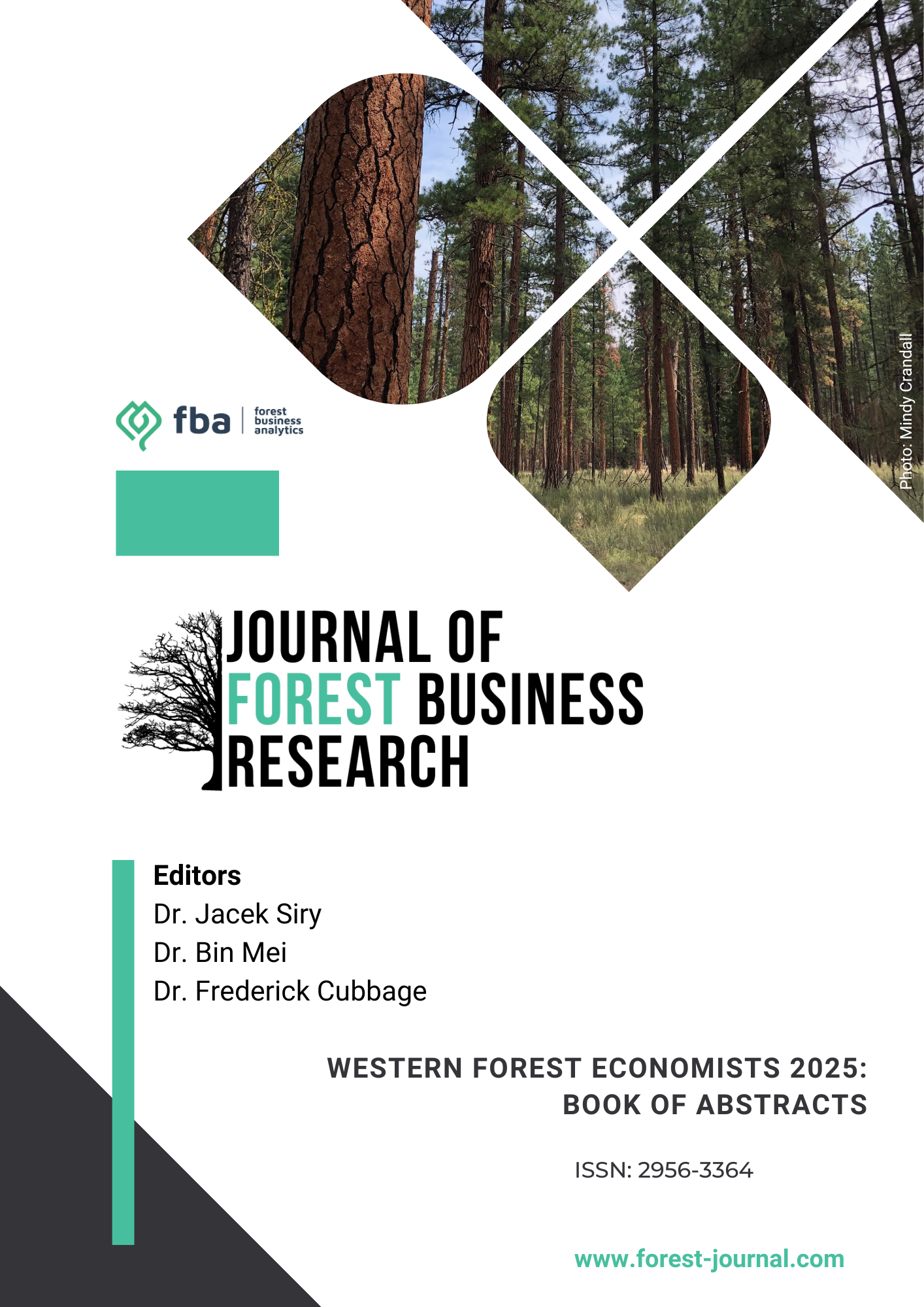Forest management efficiency in Western and Eastern Oregon: A stochastic frontier approach
Main Article Content
Keywords
ecosystem services, Oregon forests, output-distance function, stochastic frontier analysis, technical efficiency
Abstract
This study evaluates how efficiently forests in Western and Eastern Oregon produce multiple ecosystem services under differing biophysical and policy contexts. Using 11,555 FIA plots from 1995 to 2015 merged with Daymet climate and WaSSI hydrology data, we model a multi-output production process with timber volume, carbon stock, water yield, and species richness as outputs, and site index, stand age, and tree density as key inputs. We estimate translog output-distance stochastic frontiers separately by region to derive technical efficiency, technical change, and input/output elasticities. Results indicate Eastern Oregon attains higher average technical efficiency, reflecting strong performance relative to input endowments, while Western Oregon delivers higher realized outputs, such as timber volume and carbon stock. Elasticities suggest Eastern Oregon is more responsive to site quality and stand structure, whereas Western Oregon exhibits greater technical progress, consistent with the adoption of improved practices. Policy implications include emphasizing active management investments in the East to capitalize on high efficiency and site potential and sustainable intensification in the West to maintain high production while safeguarding ecosystem services. Region-specific, multifunctional strategies can better align timber, carbon, water, and biodiversity goals across Oregon’s contrasting forest regions.






